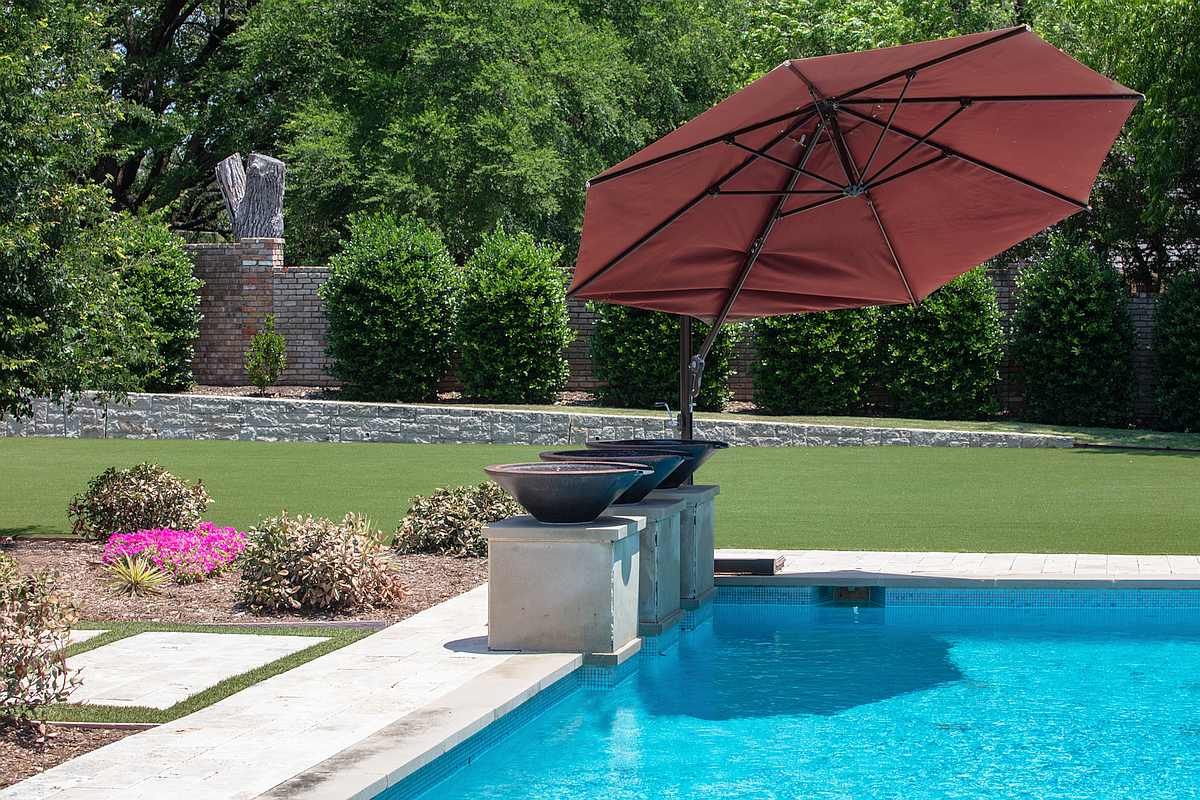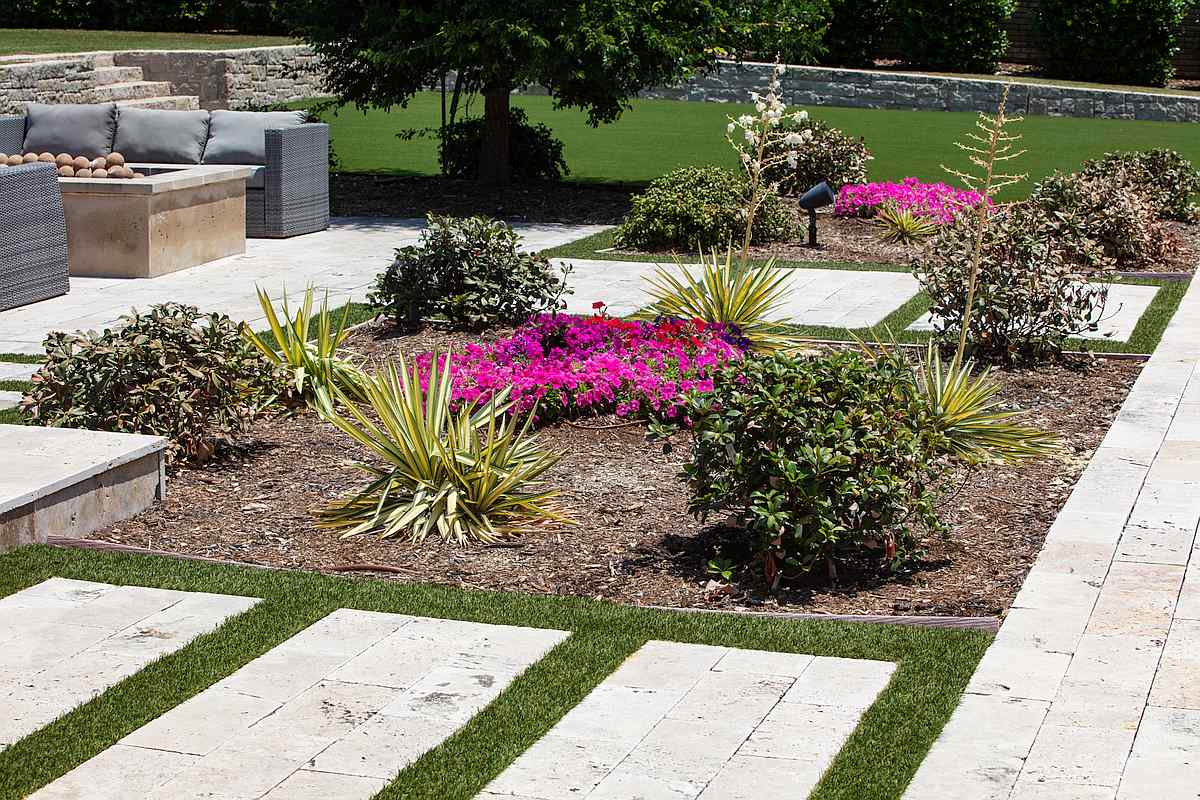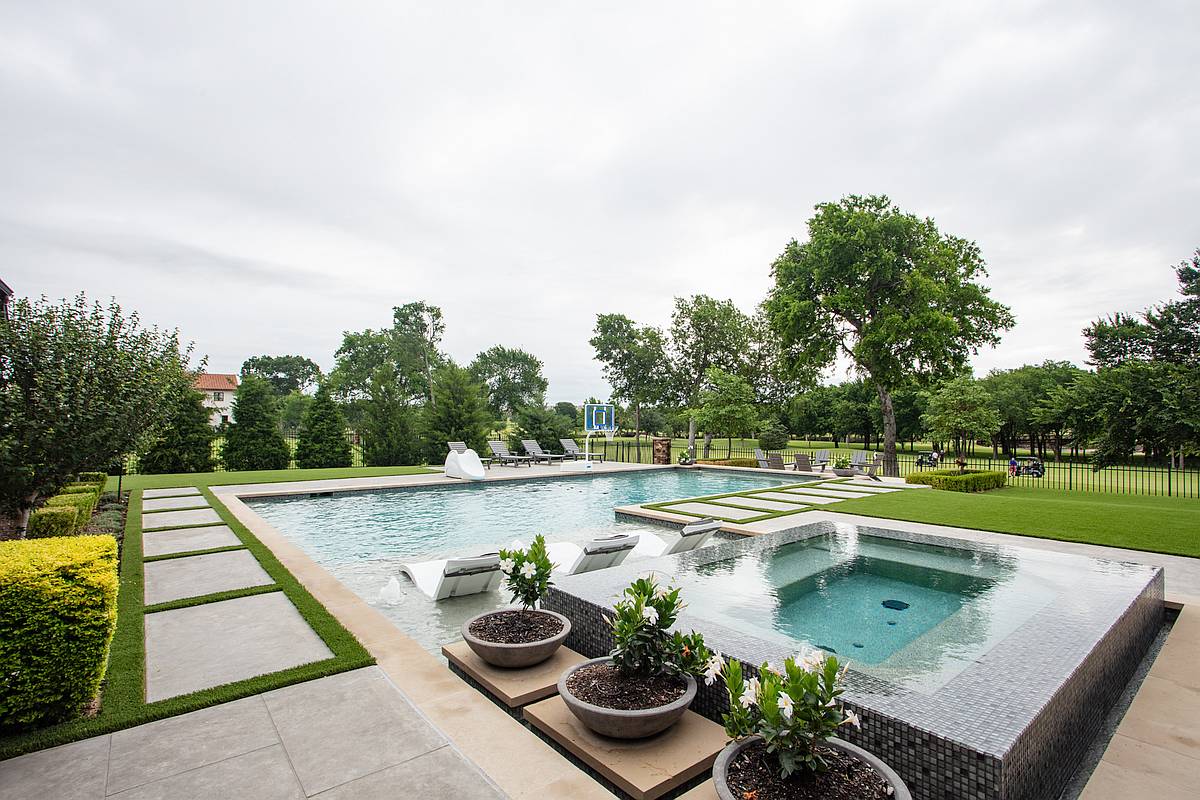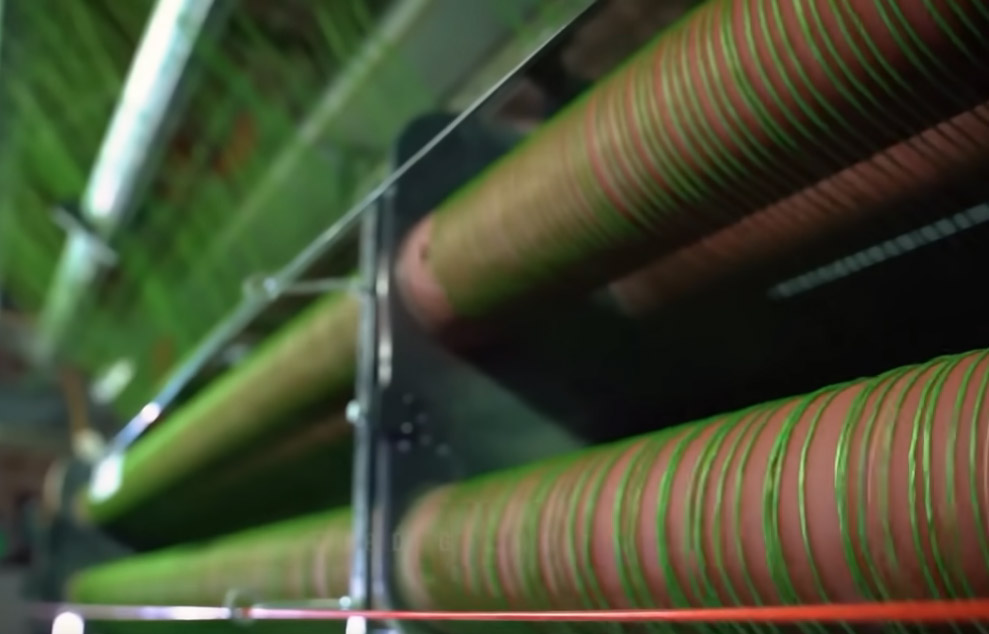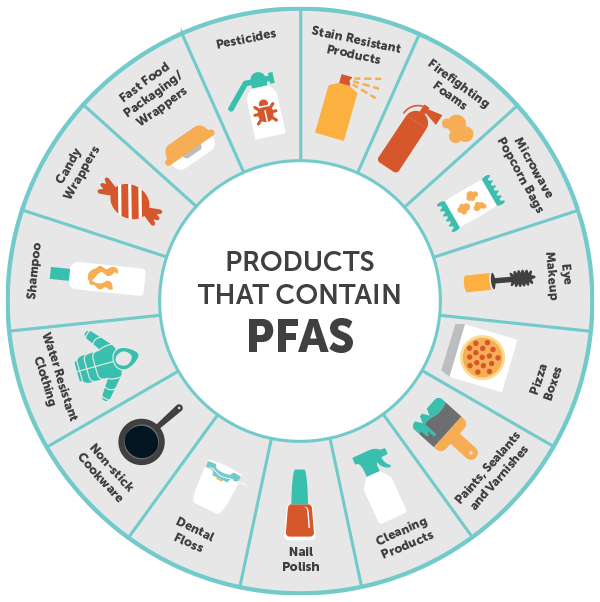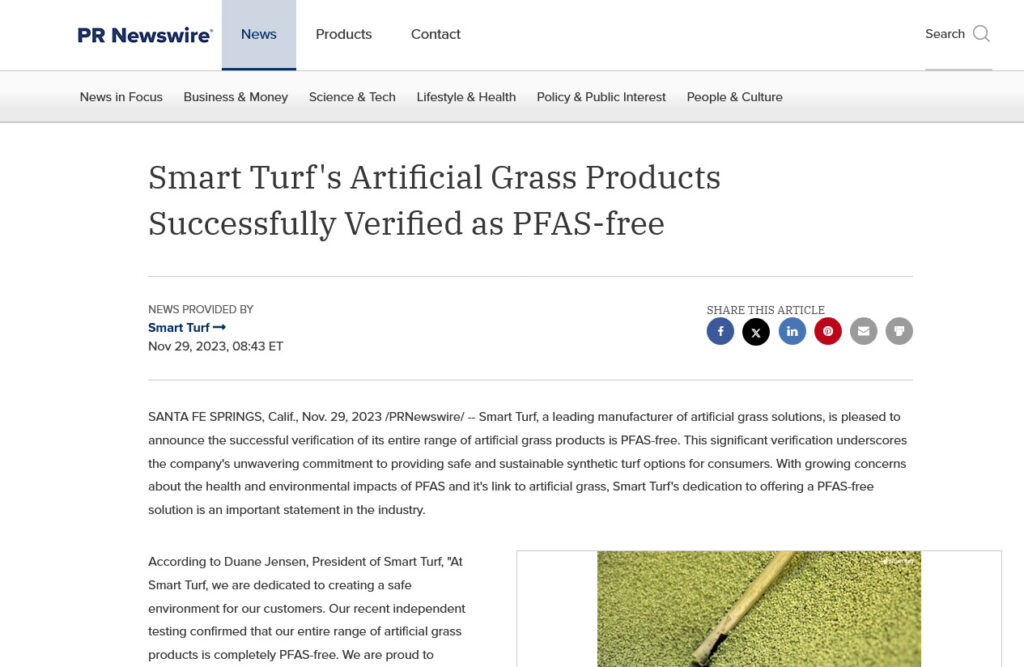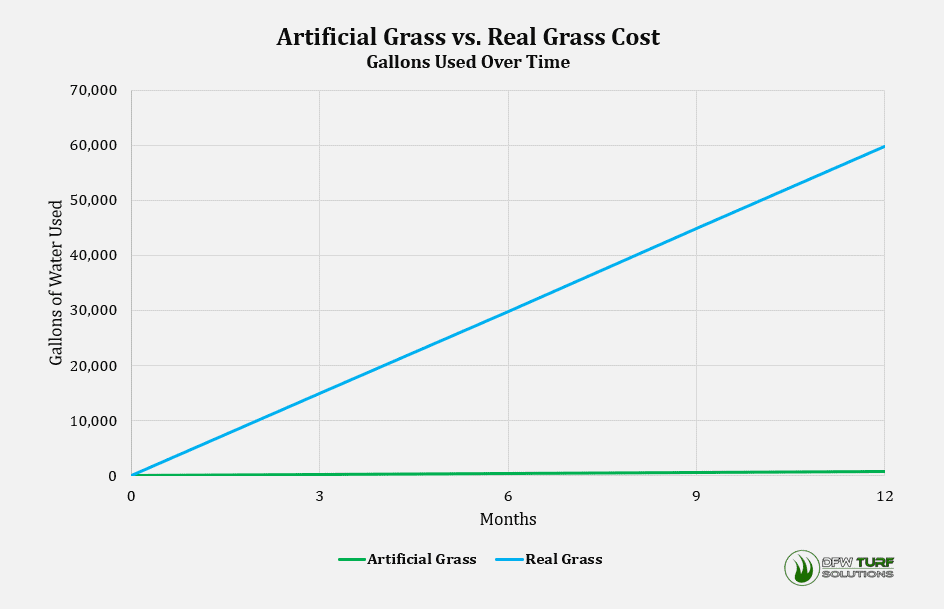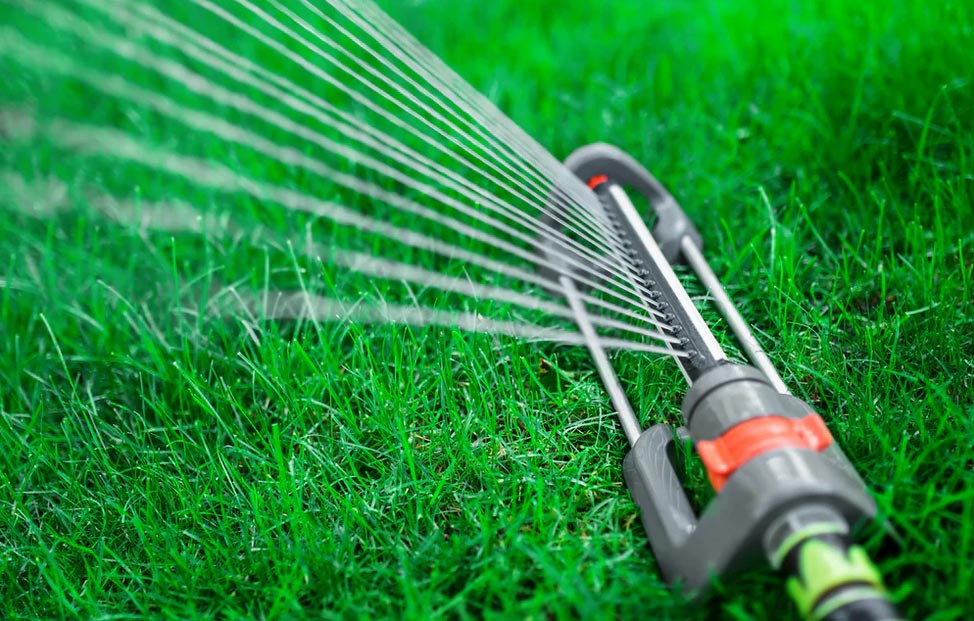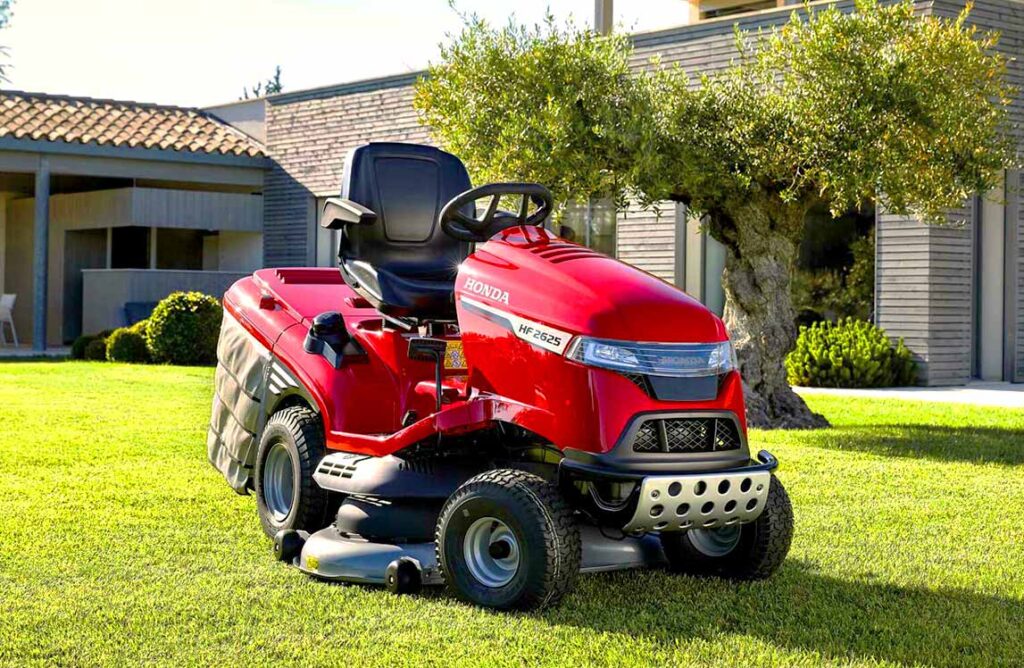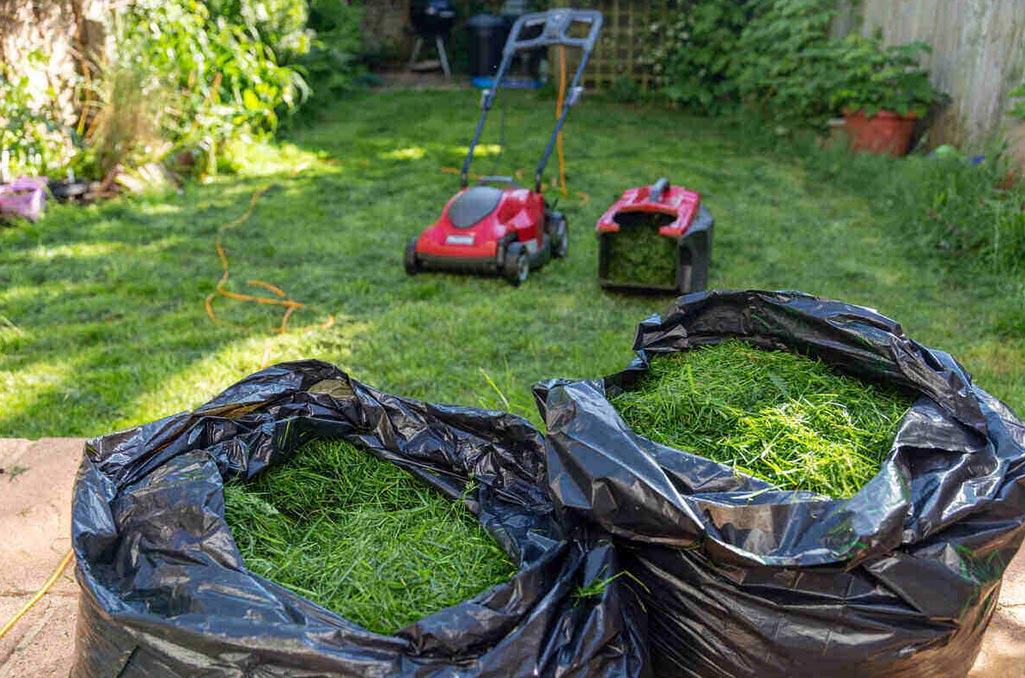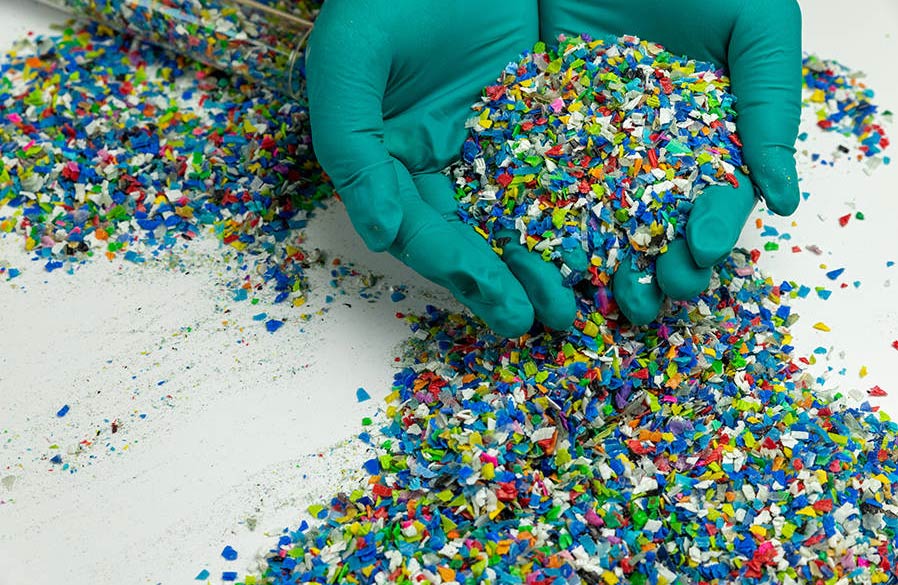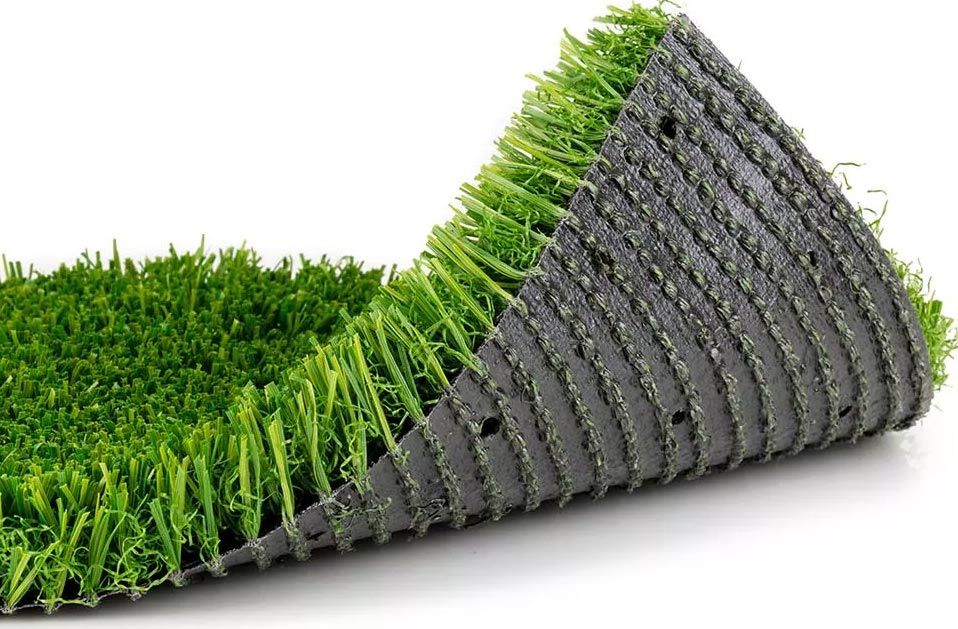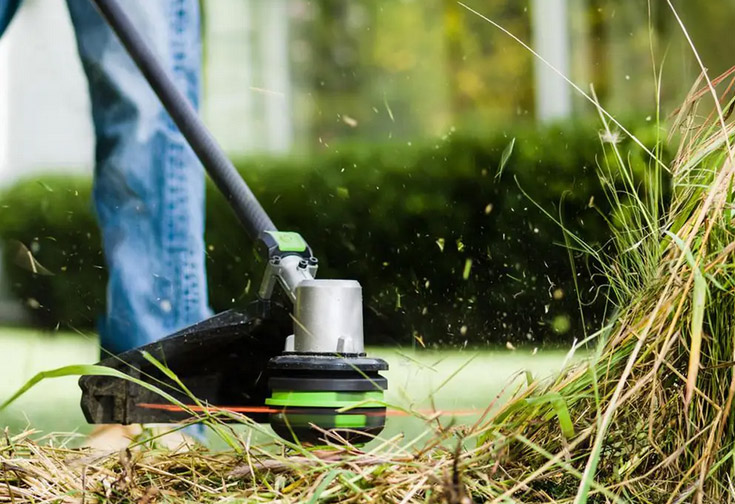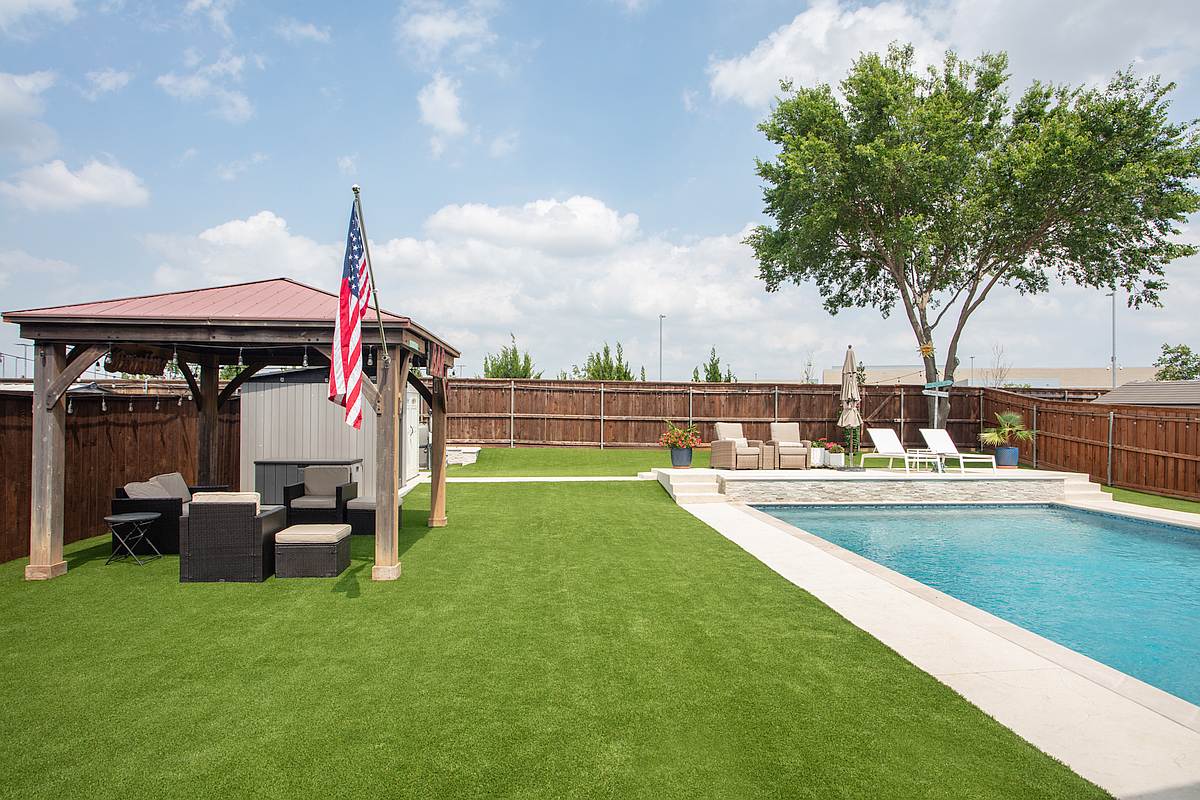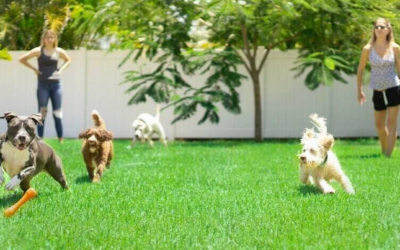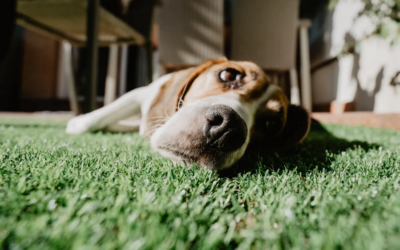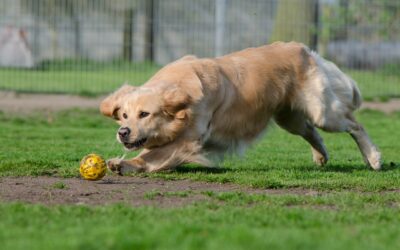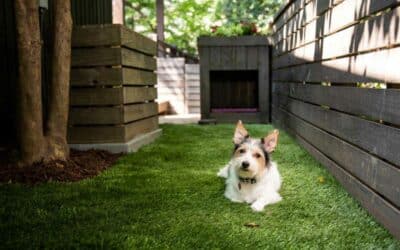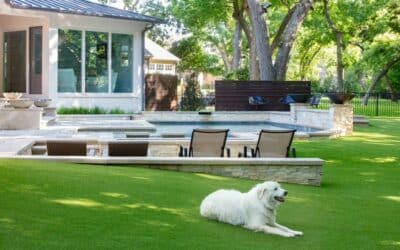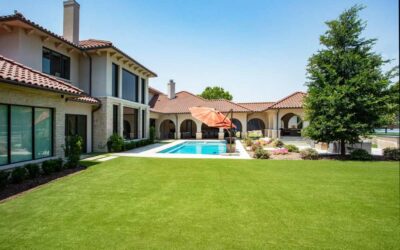Is artificial grass good or bad for the environment?
That’s a simple question that doesn’t have a simple answer. Ask 10 different professionals in varying fields and you’ll likely get 10 different answers depending on who they work for, their beliefs about climate change, and what they know about artificial grass.
Some say that the use of artificial grass in backyards is bad for the environment because microplastics damage soil quality or drainage, end up in landfills, and impacts air quality and wildlife.
However, modern types of high-quality artificial turf have corrected many of the past environmental concerns—and actually have some environmental benefits that are sometimes missed.
Let’s compare artificial grass vs real grass a little more closely to see what the full story is with the environmental impact of artificial turf.
IS ARTIFICIAL GRASS BAD FOR THE ENVIRONMENT?
Artificial grass is made of plastic but technological advances mean that modern, high-quality turf manufactured in the U.S. contains none of the forever chemicals (PFAs) that were once used in turf production—and it even has some clear environmental benefits over real grass.
Although synthetic grass gets hotter than real grass and more can be done with recycling it, turf uses far less water than real grass, needs no carbon-emitting equipment, and needs no chemicals for the maintenance process like real grass. Some turf is even now made with recycled materials.
Many of the arguments that say artificial turf is bad for the environment are one-sided and focus on the old types of turf used largely in sports fields. There are undoubtedly pros and cons of artificial grass for the environment—as there are with real grass—but balanced discussions consider that the manufacturing process and quality of the end product have improved significantly in the past two decades.
We go into these topics in more detail below but first…
WHY IS ARTIFICIAL GRASS SO POPULAR?
The main reasons why synthetic grass is becoming ever-more popular in yards across North America are:
- The best turf closely resembles the realistic appearance and feel of natural grass
- A wide range of pile heights, weights, and colors are available
- Extremely low maintenance saves time and money
- Next to no watering is required (especially beneficial in drought areas)
- Looks green and immaculate all year round with no bald patches, divots or mud
- Durable and long-lasting with a lifespan of up to 20 years or more
- Despite the higher installation costs of artificial turf, it pays for itself in around 5 years
- Saves money on maintenance costs every year
- Needs no sunlight to grow—an excellent choice for shaded yards
- All weather—can be used after rain, snow, and ice
- May increase home value
Synthetic turf has been used in sports arenas like NFL stadiums and college football stadiums for decades. In the past 20 years, we’ve seen it increasingly replace natural grass in backyard landscaping, not only for lawns but also for kids’ play areas, around swimming pools, and even as backyard putting greens.
That’s largely because of improved manufacturing methods—thanks to technology, which has made artificial turf more affordable and addressed many of the quality and environmental concerns.
It can be hard to tell the difference between the best synthetic turf lawns and real grass lawns now because of the improved coloration and the soft, lush, springy texture of the best lawn turf.
GET A FREE ARTIFICIAL GRASS ESTIMATE
The experienced team at DFW Turf Solutions can help you install an environmentally friendly artificial turf space. Get a free estimate here.
WHY ARTIFICIAL TURF IS GOOD FOR THE ENVIRONMENT
Artificial turf is manufactured from various types of plastics, with rubbers and silica-based materials also used in installations.
The use of plastics leads some people to claim that artificial turf is bad for the environment. Artificial turf is indeed made mainly from polyethylene, polypropylene or nylon. Turf fibers resembling grass blades are machine-stitched into a permeable backing with an adhesive added as a secondary backing. Find out more about how artificial turf is made here.
Going deeper into the environmental question, certain benefits come from the lack of maintenance (and therefore resources) required by turf after installation—but there are others, as explained below.
No “forever chemicals” in high-quality artificial grass
The “elephant in the room” with artificial grass used to be the toxic substances contained within the plastics and infill.
The main concern used to be lead and heavy metals that have been classed as hazardous to human health. Studies led the Center for Environmental Health to pressure turf manufacturers to adhere to strict limits on lead levels in artificial grass. Nowadays, most high-quality artificial grass in the U.S. is lead-free though it’s still traceable in lower-quality grass. Artificial grass installed by DFW Turf Solutions contains no detectable traces of lead.
The main health focus with artificial turf nowadays is on the so-called “forever chemicals” or polyfluoroalkyl substances (PFAs). They are called “forever chemicals” because they break down only very slowly over many years.
These chemicals have been used since the 1940s in multiple household products because of their fire resistance and ability to repel dirt and water.
Pressure from those concerned about public health has led to more awareness of the need to reduce these chemicals in products but today, they are still widely used in shampoos, cleaning products, non-stick cooking equipment, waterproof clothing, paint, cosmetics, and more.
In the U.S., at least, PFAs have largely been removed from artificial grass production. In the past, PFAs were used widely as lubricants for the extrusion machines for plastic yarn during manufacturing.
Old sports fields with artificial turf exacerbated this problem by using crumb rubber infill, which is made from recycled tires often containing PFA substances.
Artificial grass installed by DFW Turf Solutions contains no forever chemicals and we don’t use crumb rubber infill.
Shaw Industries, one of the largest sports turf manufacturers in the country said in a statement in 2023:
“PFAS chemicals are one of many substances that we require our supply partners to disclose the presence of in raw materials, components, and finished goods purchased by Shaw. Based on information provided to date by suppliers, Shaw Sports Turf does not use PFAS chemicals… to manufacture the components of its sports turf field products.”
In fact, all major turf manufacturers in the U.S. have switched to other, safe lubricants for extrusion machines. This move has been announced in press releases—so, modern artificial grass is simply different from its predecessors.
Turf uses much less water than real grass
Real grass lawn irrigation uses an average of 0.623 gallons per square foot. For a 1,000-square-foot lawn, that’s 623 gallons each time it’s watered. This varies throughout the country—it’s even higher in hotter, drier regions.
The Environmental Protection Agency (EPA) estimates that outdoor water usage accounts for up to 60 percent of total household water use in some states. So, keeping a real grass lawn looking healthy uses a massive amount of water—and is especially challenging in drought-stricken areas of the country. Timed sprinkler systems may activate even when water is not needed, exacerbating the problem.
Artificial turf may be a more sustainable landscaping solution. It requires no water most of the time. An occasional rinse—or more regularly if dogs use it or you have pet turf installed—is all that’s required for maintenance. The comparison of water usage is clear:
Using the above estimates, watering a 1,000-foot grass lawn twice a week requires 2 x 623 gallons = 1246 gallons per week = 4984 gallons per month.
Rinsing a 1,000-foot artificial grass lawn once a month uses around 60 gallons of water.
This means that real grass uses 83 times as much water as artificial grass. That’s better for the environment and better for your pocket.
Turf requires no air-polluting equipment
Running a petrol lawnmower for an hour is estimated to have a polluting effect similar to that of driving a car for 100 miles. Additionally, it results in the same air and noise pollution levels as running 11 cars simultaneously for the same time frame.
Expanding this out over homes and yards across the country creates a massive amount of carbon- pollution.
Though technology has improved the efficiency of the machinery, it has also made ride-on mowers more popular for larger gardens, which use even more fuel. Trimmers, weed whackers, and other equipment may also be factored in, leading the U.S. Environmental Protection Agency to name lawn equipment as a major source of air pollutant emissions.
Conversely, artificial turf requires no heavy machinery burning fossil fuels as it needs no mowing, trimming or weedkilling. The most you may need is a leaf blower or vacuum cleaner to clean artificial grass.
Many exponents of real grass say that grass is a living organism that gives out oxygen and absorbs carbon—and is, therefore, better for the environment. This conveniently ignores the fact that mowing the lawn sends carbon straight back into the same atmosphere it was taken from.
No grass clippings or other garden waste
What happens to the grass clippings after all that lawn mowing?
The EPA studied the issue of yard trimmings and composting in the U.S. in 2018. It found that grass clippings generated 35.4 million tons of municipal solid waste (MSW), which is 12.1 percent of all MSW in the country.
Some of this is composted—just under two-thirds of it—and some is combusted. The remainder—over 10.5 million tons—ends up in landfill, which comprises over 7 percent of all MSW landfilled.
Plastic bags are also used for grass clippings—and what happens to the lawn maintenance equipment that no longer works? That could also end up in the local landfill.
None of this waste is generated during the long life of an artificial turf lawn.
Fewer toxic chemicals in runoff
Inorganic fertilizers, herbicides, weed killers, and pesticides are commonly used to maintain real grass lawns and help them grow healthily. This can create a toxic load of chemicals that enters the soil and, ultimately, rivers and other water sources due to runoff after rainfall.
As you’ve seen, the toxins that used to be present in artificial grass have largely disappeared. And no fertilizers, herbicides, weedkillers or pesticides are required.
Your artificial grass will look beautiful for years to come with virtually no maintenance. Most weeds in artificial grass crop up in the infill and can be easily removed by hand.
There is, therefore, a strong argument to be made that more toxins are generated by keeping a real grass lawn maintenance than the synthetic variety. Which type is really better for the environment, your family’s health, and pets?
More recycled and recyclable products are emerging
Artificial grass generates no waste during its long lifetime and, with greater recycling efforts and technological advances, disposal at the end of its life can be handled better than currently.
One of the criticisms of artificial grass is that it may end up in landfills. The materials in artificial grass can be recycled and used again but it’s challenging to do so because the bonded plastics need separating before recycling.
Check locally if you can recycle your artificial grass because this is becoming more common. Also, more recycled products are emerging as the years pass and the demand for more sustainable products increases.
In particular, companies in the U.S. are beginning to make turf made from olefin fibers, recycled plastics or other fibers that need no separating before recycling. Some products now use sugar cane or plant-based backing.
After recycling, the turf can be melted into small pellets and used to make something else—flooring, benches, insulation, etc.
Other turf companies help residential or commercial customers repurpose used turf in animal shelters, dog parks, playgrounds, sports complexes, golf driving ranges, and so on. This saves it from landfill.
As innovation continues, especially with sports field turf, we expect to see more artificial grass that’s not just 100% recyclable, but also made from a higher percentage of recycled materials.
WHAT ARE THE MAIN CONCERNS ABOUT ARTIFICIAL GRASS FOR THE ENVIRONMENT?
Artificial turf is largely made from plastic. There’s no getting away from that—and some people will always prefer real grass just for its look, feel, and perceived benefits for the environment.
The main concerns about turf that proponents of real grass have for the environment include:
- The fear of micro-plastics making their way into the soil and the wider ecosystem and their impact on human health
- The impact on wildlife habitat due to lack of access to the soil
- The carbon footprint from manufacturing and lack of carbon absorption compared to real grass
- An increased risk of flooding
- Heating of the local urban environment more than real grass
- Turf ends up in a landfill
There is a big difference between properly installed, high-quality artificial grass made in the U.S. and DIY jobs from low-quality imported turf made with poor manufacturing methods and purchased online.
For instance, the turf installed by DFW Solutions handles 30+ inches of rain per hour per square yard, which is more than adequate for most areas of the country. This should put to bed the argument about drainage and flooding risk.
Professionally installed high-quality turf addresses many other fears about chemical pollution, carbon footprint, and soil quality beneath the turf. When properly planned and installed, it’s pet and wildlife-friendly too.
And, remember, real grass is not without its carbon footprint, chemical pollution, contributions to landfill, etc.
FAQs
SUMMARY: IS ARTIFICIAL TURF ECO-FRIENDLY?
It may be a stretch to call artificial turf a “green solution” yet. However, we’ve seen that there are many ways that turf is good for the environment, despite its perceived downsides.
Artificial grass has its environmental consequences—but so does real grass. Besides, technology is helping to solve many of the main concerns. Many of the downsides of turf are overplayed or refer to older types of grass that are no longer produced in the U.S.
As well as looking like the real thing and its long lifespan, the turf installed by DFW Turf Solutions is free of forever chemicals, ultra-low maintenance, recyclable, and employs cooling technology.
We’ve helped thousands of homeowners make the switch from natural grass to synthetic turf over the past two decades. Discuss your options with an artificial grass professional.

